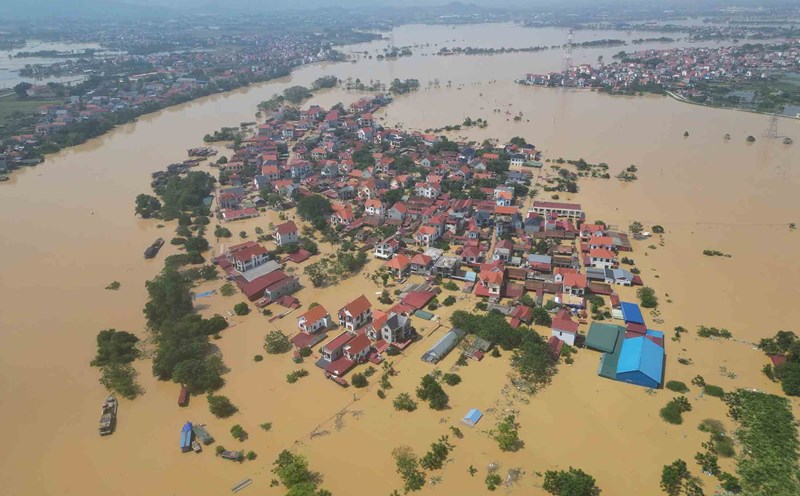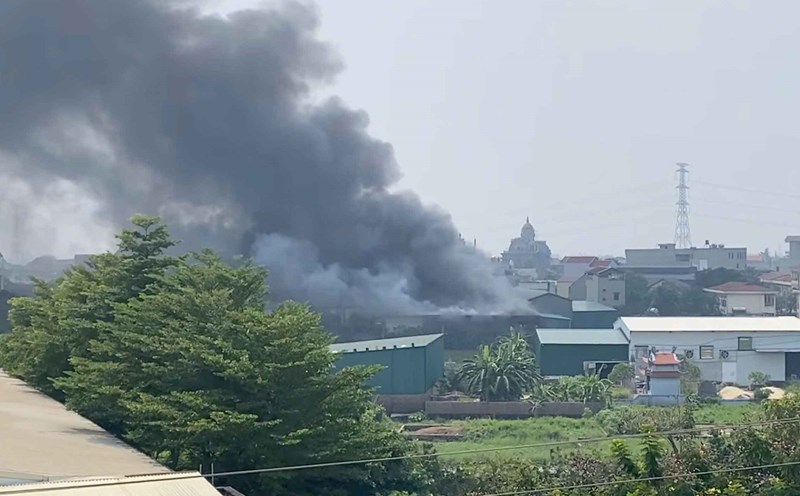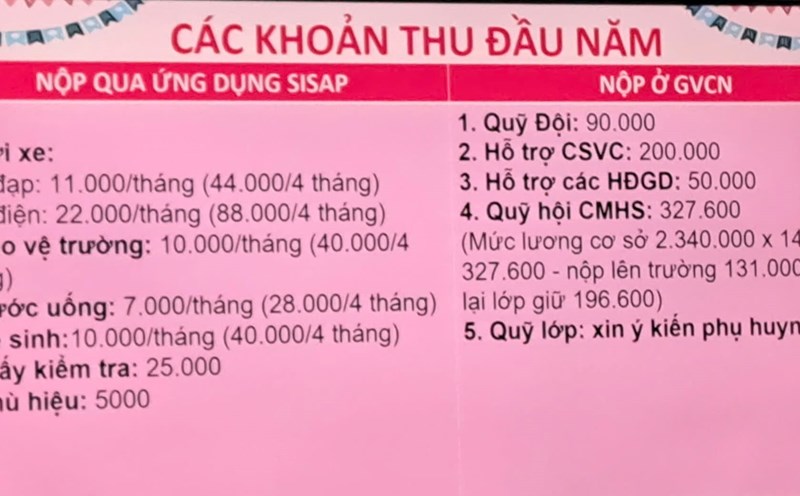Patient N.V.C (56 years old, in Lang Son) was transferred to the Emergency Department, Central Hospital for Tropical Diseases in a state of severe dengue fever and shock.
On October 4, the patient had a high fever with chills, headaches, body aches, nausea and vomiting. After going to a local medical facility for examination, there was a test confirming positive for dengue fever, the patient was hospitalized for treatment for 4 days but the disease did not improve, so he was transferred to the Central Hospital for Tropical Diseases for further treatment.
At the Emergency Department, the patient was in the 5th day of the disease, with purple skin in the abdomen, legs and arms, scattered bleeding in the calf, signs of infection, rapid breathing, and oxygen support. Tests showed thrombocytopenic purpura. A ultrasound of the pleura shows an image of both sides of the pleura and abdominal fluid. The patient was diagnosed with severe dengue fever with shock and was actively supported in treatment from the beginning.
The second case is patient T.V.X. (63 years old, in Hung Yen). 5 days before being hospitalized, the patient had a high fever, severe headache, and body aches. Although he took fever-reducing medicine, the symptoms did not improve, accompanied by bleeding to the toothpick and black mediastinum. The patient was taken to a medical facility near his home for examination. Here, he was diagnosed with dengue fever, hospitalized for 3 days, the disease did not improve, so he was transferred to the Central Hospital for Tropical Diseases for monitoring and further treatment.
At the virus - Parasitology Department, the patient was admitted to the hospital with completely covered skin and blood, scattered small drops of bleeding under the skin of the forearms and calves. Test results showed that platelets were reduced to only 8 G/L, which poses a very high risk of bleeding. After 4 days of treatment, the patient had cuts off his fever, reduced headaches, stable health, and platelets gradually increased.
"Fortunately, the patient did not show any signs of blood pressure, was detected early, and treated promptly, so there were no unfortunate complications" - Dr. Nguyen Thanh Binh, Deputy Head of the Department of virus - Parasitology, shared.
Another case is patient V.D.L (34 years old, in Tay Phuong, Hanoi). After storm No. 10, many mosquitoes appeared in his home area. In front of his house, there is a large canal, the water rises, causing mosquitoes to multiply rapidly. On October 1, Mr. L started to have a headache, pain in the eye area and joints, suspected of having dengue fever, so he went to the doctor and tested positive for Dengue.
The patient was treated and monitored at home, but after 3 days the disease did not improve, so he was transferred to the Central Hospital for Tropical Diseases. Upon admission, the patient was obese, had emphysema of the pleura and abdomen, and was given a severe prognosis and was at high risk of complications.
Doctor Nguyen Thanh Binh said: As soon as they were admitted to the hospital, all patients were actively treated and closely monitored for their health condition every 3 hours. Thanks to early detection and treatment, the patient's health condition has improved well, and the patients are now stable."
Doctor Nguyen Thanh Binh said that storms and flooding cause disease-carrying mosquitoes to thrive, increasing the risk of dengue fever outbreak.
Doctors recommend that people need to kill lentils, clean the environment, cover water containers, sleep under a veil, spray chemicals periodically and get vaccinated against diseases. People with underlying diseases, obesity, over 60 years old or pregnant women are susceptible to serious complications, need to see a doctor early when they have symptoms of high fever, nausea, subcutaneous bleeding or prolonged diarrhea.










